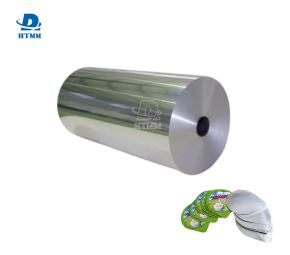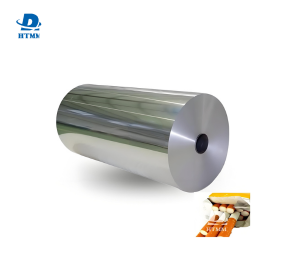Typical specifications for consumer and commercial applications
Aluminum foil for the household consumer is typically classified into standard-duty and heavy-duty foil. Standard-duty foil is thinner, typically 9–12 microns; ideal for covering light dishes, wrapping smaller items, and shorter-term food storage. Heavy-duty foil is thicker, typically 15–20 microns; heavy-duty foil is stronger and can deal with high heat.
.png)
Aluminum foil comes in different widths for home kitchens, and typical sizes vary from 30 cm to 45 cm. Wider rolls, like 45 cm, are the most commonly used in restaurants and catering because they easily cover large trays and wrap bulk portion sizes without having to layer multiple sheets. Length varies from small 10–30 meter rolls used for home environment, to commercial rolls of 100‐150 meters for kitchen use. These specifications cover everything from simple cookie trays that are oven baked, to grilling at very high temperatures.
Common Specifications in the Middle East
In the Middle East heavy duty foil is the best choice in aluminum foil for daily cooking, and large food preparations. The best-selling specifications are 45 cm wide rolls that are 100 – 150 meters long, and 15 to 18 microns thick. This size is ideal creating the necessary strength and flexibility to wrap whole lambs, large portions of meat, or large trays of rice dishes without tearing the foil.
Professional kitchens and catering facilities are often provided jumbo rolls of more than 150 metres. These more extensive rolls meant fewer roll changes at busy service and cost savings in high volume uses. Some customers even choose embossed or non-stick heavy-duty foil for ease in handling food and presentation.
Reasons for High Demand in the Middle East
There are sociocultural and economic reasons for the sustained demand for heavy-duty foil in the Middle East.
Cooking Practices - Middle Eastern food always involves a lot of grilling, roasting, and baking whole cuts of meat and other items in bulk, especially for families and gatherings at special occasions. Heavy-duty foil is thick and sturdy enough to resist tearing or ripping, in addition to being great at trapping heat in cooking.
Social - In the Middle East, outdoor dining at barbeques, picnics, social events, and things being transported in bulk, require thick wrapping that can withstand transport and open-flame cooking.
.png)
Commercial - Restaurants, hotels, and catering companies rely on the best-selling, and being heavy-duty, when peak service hits, will not punch it out. Heavy-duty foil is thicker than standard foil roll and will create less food waste from tearing, and more importantly, it helps keep food quality while in delivery.
Economic Efficiency – While heavier foil can be more expensive, it is much more reusable and made stronger preventing spoilage, leading to economic efficiencies that contribute to its popularity in the region as a well-known aluminum foil.
The Future Outlook for Heavy-Duty Foil in the Region
As the Middle Eastern populace continues to blend more traditional cooking with conveniences of contemporary lifestyles, the demand for heavy-duty foil is sure to grow. With unique properties that include strength, heat retention, and practicality, it will continue to be the ideal choice of aluminum foil for both homes and food service. Heavy-duty foil is handy from everyday meals, to hosting large catering functions in the region. Heavy-duty foil has established value as a tool of the kitchen and as part of the regional cooking and overall cultural food system.





